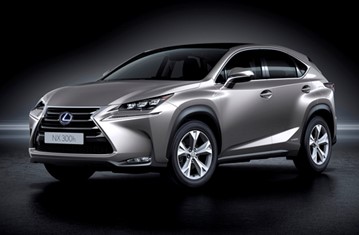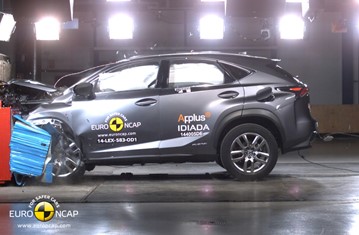Find more information in the General Comments section of the assessment
Find more information in the Rating Validity tab of the assessment
- See More
- See More
- See More
- See More
- Good
- Adequate
- Marginal
- Weak
- Poor
 Passenger
Passenger
 Driver
Driver
 Rear Seat
Rear Seat
 Front Seat
Front Seat
 Car
Car
 Pole
Pole
- Good
- Adequate
- Marginal
- Weak
- Poor


Passenger
outboard
center
Fitted to the vehicle as standard
Not fitted to the test vehicle but available as option
Not Available
-
Infants up to 13 kg
-
Infants and toddlers up to 18 kg
-
Toddlers from 9 to 18 kg
-
Toddlers over 18 kg
Easy
Difficult
Safety critical
Not allowed
| Seat Position | ||||
|---|---|---|---|---|
| Front | 2nd row | |||
| Passenger | Left | center | Right | |
| Maxi Cosi Cabriofix (Belt) | ||||
| Britax Römer King Plus (Belt) | ||||
| Britax Römer Duo Plus (ISOFIX) | ||||
| Britax Römer KidFix (Belt) | ||||
| Maxi Cosi Cabriofix & EasyFix (Belt) | ||||
| Maxi Cosi Cabriofix & EasyFix (ISOFIX) | ||||
| BeSafe iZi Kid X3 ISOfix (ISOFIX) | ||||
| Maxi Cosi Pearl & Familyfix (ISOFIX) | ||||
| Britax Römer KidFix (ISOFIX) | ||||
Easy
Difficult
Safety critical
Not allowed
In the frontal impact, chest accelerations of the 1½ year dummy were marginally high, despite the use of a rearward-facing restraint. Forward movement of the head of the 3 year dummy, sat in a forward-facing restraint, was not excessive although forces in the chest and neck were marginally high. In the side impact, both dummies were properly contained within the protective shells of their restraints, minimising the risk of dangerous head contact with the vehicle interior. The front passenger airbag can be disabled to allow a rearward-facing child restraint to be used in that seating position. Clear information is provided to the driver regarding the status of the airbag and the system was rewarded. All of the restraint types for which the car is designed could be properly installed and accommodated in the car.
- Good
- Adequate
- Marginal
- Weak
- Poor

Head Impact 18.8 Pts
Pelvis Impact 0.1 Pts
Leg Impact 6.0 Pts
The bumper showed good or adequate protection to pedestrians' legs. However, the front edge of the bonnet scored no points, providing poor protection to the pelvis region. Tests results on the bonnet surface were predominantly good or adequate with poor results recorded only at the base of the windscreen and on the stiff windscreen pillars.
- Good
- Adequate
- Marginal
- Weak
- Poor
| System Name | VSC | |
| Performance | ||
| Applies To | All seats | ||
| Warning | Driver Seat | Front Passenger(s) | Rear Passenger(s) |
| Visual | |||
| Audible | |||
|
|||
| System Name | Pre-Collision System | |||
| Type | Forward Collision Warning with Auto-Brake | |||
| Operational From | 15 km/h | |||
| Additional Information | Default On | |||
| Performance | | ||||
| Autobrake Function Only | Driver reacts to warning | |||
| Operational Speed | 15-200 km/h | 15-200 km/h | ||
| Approaching a slower moving car | Crash avoided up to 70km/h.Crash speed reduced up to 0km/h. | Crash avoided up to 80km/h.Crash speed reduced up to 0km/h. | ||
| Following a car at short distance | ||||
| Car in front brakes gently | Avoidance | Avoidance | ||
| Car in front brakes harshly | Mitigation | Mitigation | ||
| Following a car at long distance | ||||
| Car in front brakes gently | Mitigation | Avoidance | ||
| Car in front brakes harshly | Avoidance | Avoidance | ||
The NX has electronic stability control as standard equipment, together with a seatbelt reminder for the front and rear seats. A speed assistance system uses digital mapping to determine the relevant speed limit and this information is presented to the driver. The driver can then set the speed limiter to the appropriate speed. The system is an option that is expected to be fitted to most cars sold so it was included in the assessment and met Euro NCAP's requirements for systems of this type. A lane departure warning system is an option that is not expected to be fitted widely enough to qualify for assessment by Euro NCAP. However, the 'Pre-Crash Safety System', Lexus's autonomous emergency braking system, is expected to be on most cars sold so it was tested and demonstrated good performance.
- Specifications
- Safety Equipment
- Videos
- Rating Validity
Specifications
Tested Model Lexus NX 300h 'Executive', LHD
Body Type - 5 door SUV
Year Of Publication 2014
Kerb Weight 1809kg
VIN From Which Rating Applies - JTJBJRBZ 2009745
Class Small SUV
Safety Equipment
Note: Other equipment may be available on the vehicle but was not considered in the test year.
Fitted to the vehicle as standard
Fitted to the vehicle as option
Not fitted to the test vehicle but available as option
Not Available
Not Applicable
Videos
Rating Validity



Find more information in the General Comments section of the assessment
 Share
Share










The passenger compartment remained stable in the frontal impact. Dummy readings indicated good protection of the knees and femurs of the driver and the passenger. Lexus showed that the same level of protection would be provided to occupants of different statures and to those sat in different positions, whose knees may contact the dashboard in a different place. The NX scored maximum points in the side impact barrier test, with good protection of all critical body areas. In the first side pole impact test, the frontal impact airbags deployed in a later phase of the test, after the side loading on the dummy was finished. Lexus investigated the cause of this airbag deployment and found that the airbag control module, which houses an acceleration sensor, could experience a significant fore/aft signal even in a side impact. The algorithms controlling the airbag deployment were changed to safely prevent deployment under such loading and a repeat test was allowed. In that test, protection of the chest was marginal and that of the abdomen was adequate, while that of the head and pelvis was good. Lexus do not believe that the airbag deployment in a later phase of the impact is a safety issue and have no plans to modify earlier cars. Accordingly, the star rating applies from VIN JTJBJRBZ**2009745 and is not valid for earlier cars. Tests on the front seats and head restraints, and a geometric assessment of the rear restraints, indicated good protection against whiplash injuries in the event of a rear-end collision. Lexus's 'Pre-Crash Safety System' is an autonomous braking system that operates from low, city-type speeds to higher speeds typical of inter-urban driving. As the system is not standard, its functionality at low speeds did not qualify for assessement.